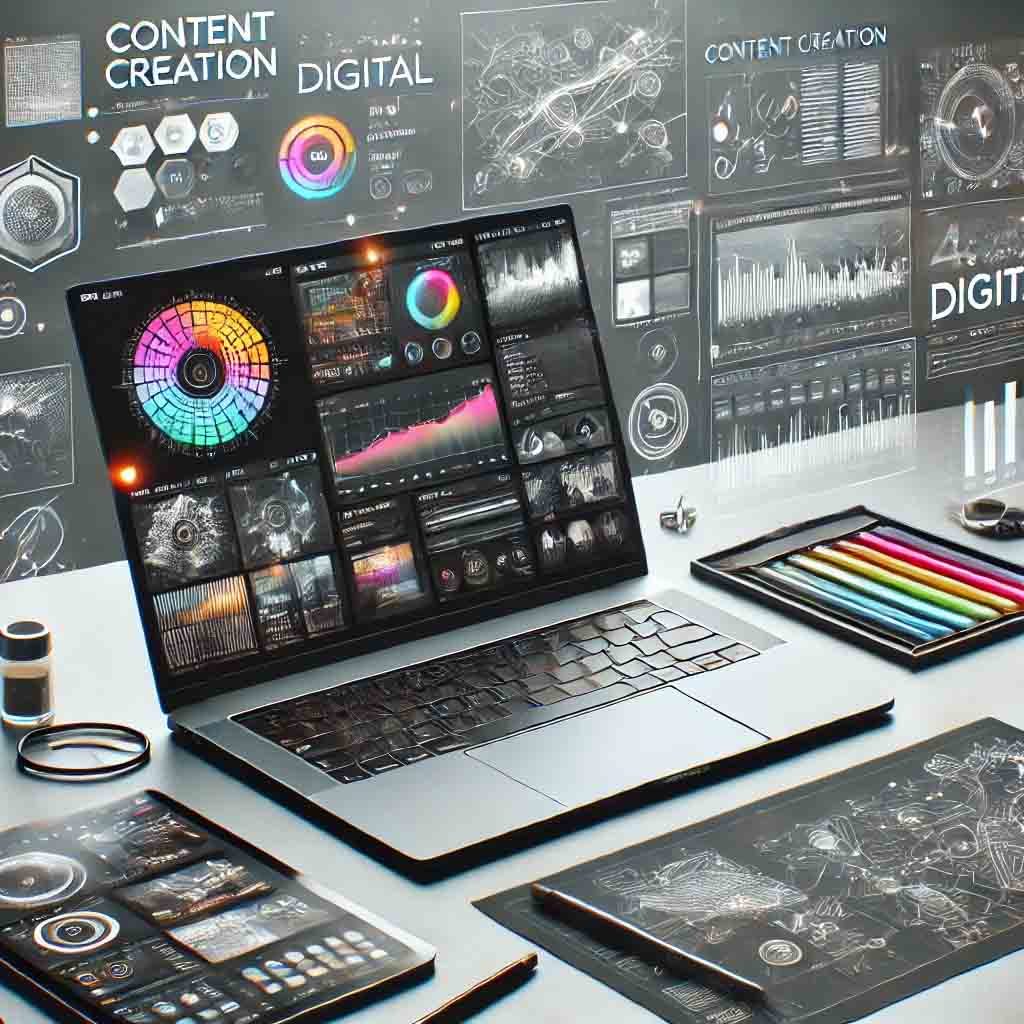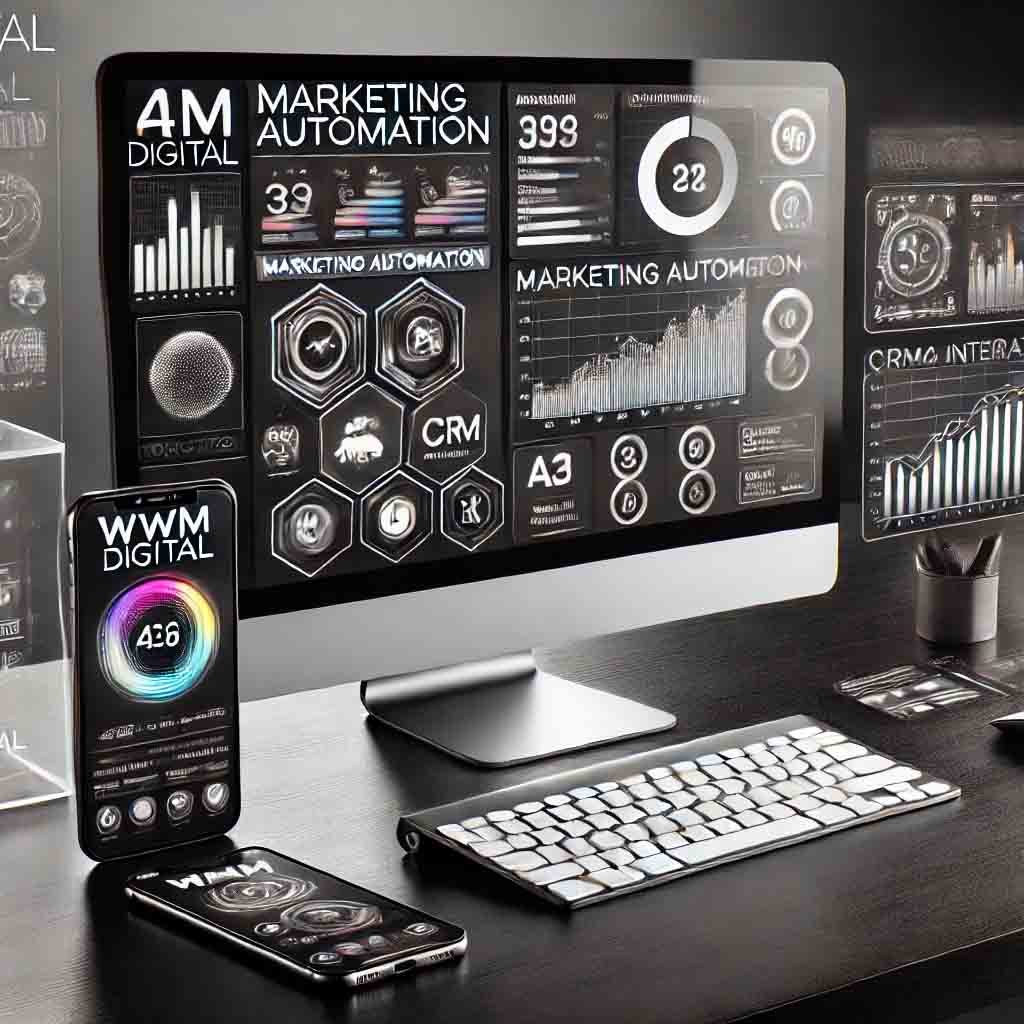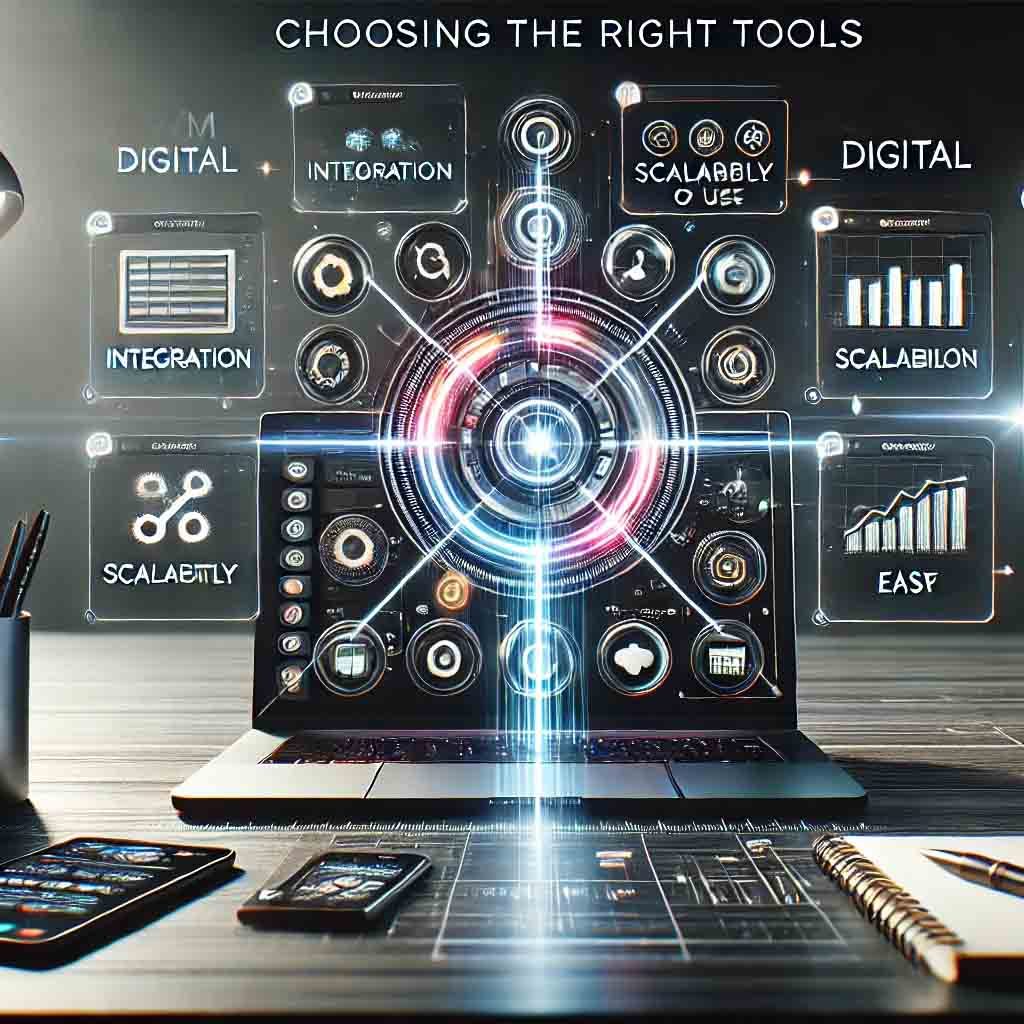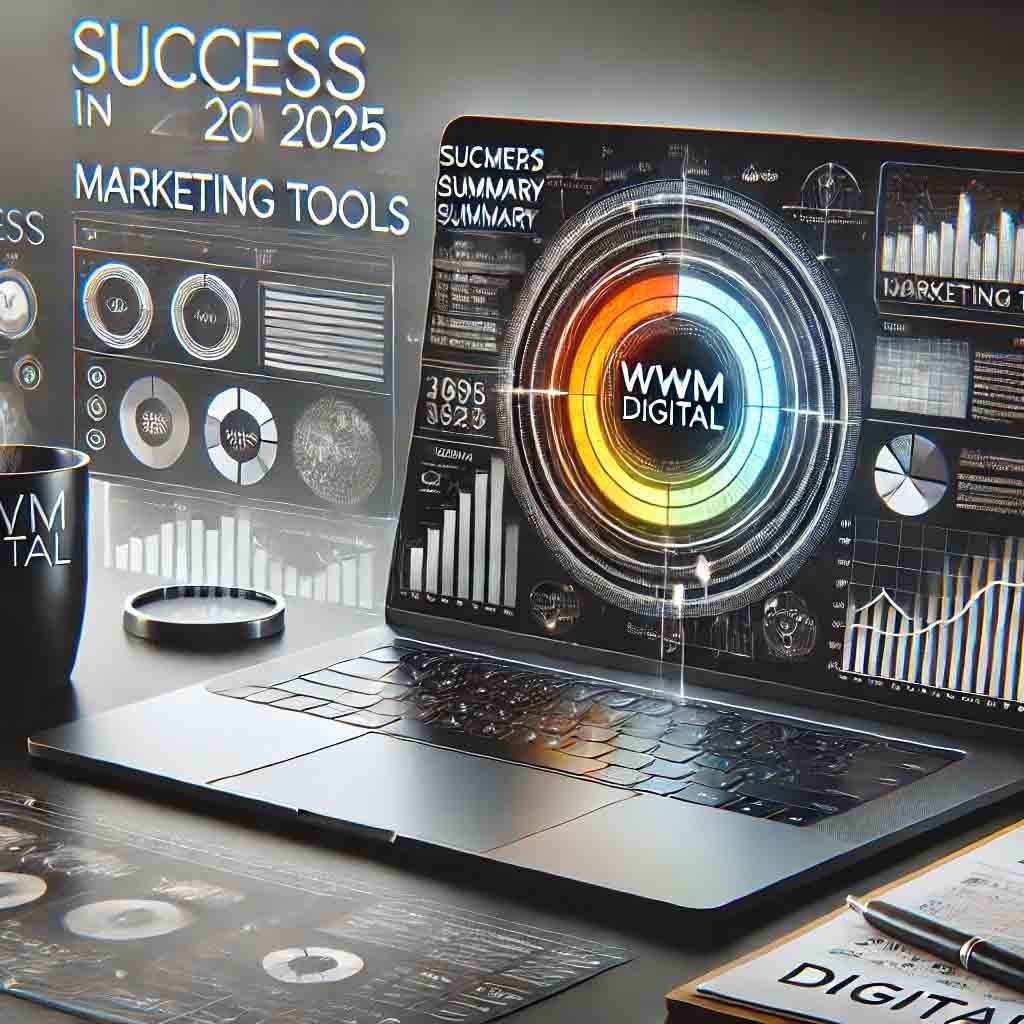
In the fast-paced world of digital marketing, 2025 is proving to be a year of unprecedented innovation. According to recent studies, 70% of marketers report that leveraging the right tools has doubled their campaign efficiency. This statistic underscores a universal truth: the right technology can mean the difference between success and stagnation in an increasingly competitive landscape.
Yet, the sheer number of tools available today presents a significant challenge. From SEO platforms to content creation software and analytics dashboards, navigating this vast ecosystem can feel overwhelming. Many marketers find themselves asking: Which tools are truly indispensable for success in 2025?
This article aims to answer that question by curating a list of cutting-edge tools designed to enhance your SEO, content creation, analytics, and automation efforts. Whether you’re a seasoned marketer or just starting your journey, this comprehensive toolbox will ensure you stay ahead of the curve.

SEO Tools: Staying Ahead in Search
Overview
The world of search engine optimization (SEO) in 2025 is more dynamic than ever. With algorithms constantly evolving and user behaviors shifting, staying ahead in search requires more than just great content; it demands strategic use of cutting-edge tools. Marketers now face the challenge of optimizing for complex search trends such as semantic search, voice queries, and localized search intent. The right SEO tools are no longer optional—they’re essential for maintaining visibility and relevance.
Top Tools
Semrush
- What It Offers: Semrush remains an industry leader, providing robust keyword analysis powered by artificial intelligence. Its competitive insights let marketers analyze their rivals’ strategies, and its automated site audits highlight optimization opportunities in real time.
- Why It’s Essential: In 2025, AI integration allows Semrush to offer predictive keyword trends, helping users anticipate search behaviors before they happen.
Surfer SEO
- What It Offers: Surfer SEO specializes in content optimization using Natural Language Processing (NLP), aligning content perfectly with search engine requirements.
- Why It’s Essential: As search engines place greater emphasis on semantic search and user intent, Surfer SEO ensures that every piece of content is relevant and ranks higher on SERPs (Search Engine Results Pages).
Ahrefs 2.0
- What It Offers: The revamped version of Ahrefs now includes advanced backlink tracking and predictive ranking analytics. Its data visualization capabilities simplify complex insights for strategic decision-making.
- Why It’s Essential: With backlinks still being a cornerstone of SEO, Ahrefs 2.0 offers unparalleled insights into link-building strategies and domain authority improvement.
Future Trends in SEO Tools
- AI-Powered Content Generation: Tools like these are starting to use AI to generate optimized content instantly, tailored to specific keywords and user intent.
- Automation for SERP Domination: Predictive analytics combined with machine learning is enabling tools to suggest real-time changes to campaigns, ensuring consistent top-ranking performance.
- Voice Search Optimization: As voice queries become more prevalent, tools will integrate features for optimizing content for voice search syntax and intent.
Using these tools strategically can make the difference between being buried in search results or dominating the first page. These innovations represent not just a technical advantage but also a critical opportunity to connect with audiences in meaningful ways.

Content Creation Tools: Crafting Engaging Narratives
Overview
Content is the cornerstone of any marketing strategy, and in 2025, it’s no longer enough to produce generic material. Audiences crave personalized, visually stunning, and interactive experiences. Compelling narratives combined with appealing visuals not only capture attention but also foster deep connections with audiences. This makes choosing the right tools for content creation critical to standing out in a saturated digital landscape.
Top Tools
Jasper AI
- What It Offers: Jasper AI is a sophisticated writing assistant that helps marketers create compelling copy in seconds. With advanced AI capabilities, it allows customization of tone, style, and voice, catering to different audience segments.
- Why It’s Essential: In 2025, time is a premium resource. Jasper enables marketers to produce high-quality blogs, ads, and emails at scale without sacrificing creativity.
Canva Pro 2025
- What It Offers: Canva has transformed from a simple design tool to a powerhouse for interactive content creation. It offers augmented reality-enhanced visuals, templates for infographics, and animations, making it ideal for creating engaging social media posts.
- Why It’s Essential: Interactive and visually dynamic content sees 94% more engagement than static posts. Canva Pro empowers teams to design stunning content without professional design expertise.
Pictory
- What It Offers: Pictory simplifies video editing, allowing marketers to turn scripts into professional videos in minutes. It supports both short-form and long-form formats, making it ideal for platforms like YouTube, TikTok, and LinkedIn.
- Why It’s Essential: Video continues to dominate in 2025, with 82% of all online traffic predicted to be video content. Pictory makes high-quality video creation accessible for brands of all sizes.
Emerging Trends
- AR/VR for Immersive Storytelling: Augmented and virtual reality are no longer gimmicks; they’re key storytelling tools. Brands are using AR to create interactive experiences, such as virtual try-ons or immersive brand narratives, capturing unparalleled audience engagement.
- AI-Driven Instant Content Creation: From automated video scripts to real-time personalized graphics, AI tools are making it easier than ever to produce on-demand content tailored to specific audience needs.
By leveraging these tools and embracing new trends, marketers can create a powerful narrative that not only engages but also converts their target audience.

Analytics Tools: Measuring Success
Overview
In the data-driven marketing landscape of 2025, making informed decisions is no longer optional—it’s essential. Analytics tools empower businesses to measure the success of their campaigns, identify areas for improvement, and predict future trends. With data as the backbone of marketing strategies, understanding how to leverage advanced analytics tools is critical to staying competitive.
Top Tools
Google Analytics 5.0
- What It Offers: The latest version of Google Analytics integrates AI-powered insights, enabling marketers to forecast campaign performance accurately. Predictive analytics help businesses understand future customer behaviors, while advanced segmentation offers deeper insights into user demographics and behaviors.
- Why It’s Essential: With over 80% of marketers relying on analytics to improve campaign ROI, this tool remains a cornerstone for any digital strategy.
Hotjar Next
- What It Offers: Hotjar’s updated platform enhances user behavior tracking through improved heatmaps, session recordings, and survey feedback mechanisms. Its focus on user-centric design makes it invaluable for UX optimization.
- Why It’s Essential: In an era where 77% of users abandon poorly designed websites, understanding user interactions is critical for reducing bounce rates and increasing conversions.
Tableau Public
- What It Offers: Tableau Public excels at transforming complex data into actionable visualizations. The tool enables teams to create interactive dashboards, simplifying decision-making for non-technical stakeholders.
- Why It’s Essential: Visual data analysis improves comprehension and communication, especially in collaborative marketing environments.
Future Insights
- Predictive Analytics as the Standard: As AI and machine learning algorithms evolve, predictive analytics will become the norm. These tools will not only provide insights into what happened but also suggest proactive adjustments to optimize campaigns in real time.
- Cross-Platform Integration: Future analytics tools will seamlessly integrate across multiple platforms, consolidating data for a holistic view of campaign performance.
- Customer Journey Mapping: The emphasis will shift towards tracking and analyzing complete customer journeys, enabling businesses to deliver hyper-personalized experiences.
By utilizing these cutting-edge tools, marketers can move from reactive decision-making to proactive strategies, ensuring their campaigns remain efficient and impactful in 2025 and beyond.

Marketing Automation Tools: Scaling with Efficiency
Overview
As the marketing world grows increasingly complex, automation tools have become indispensable for managing tasks, optimizing campaigns, and scaling operations. In 2025, these tools are not just about saving time—they’re about precision. Marketing automation enhances customer engagement, streamlines workflows, and ensures campaigns reach the right audience at the right time. This evolution allows marketers to focus on strategy and creativity while letting technology handle repetitive tasks.
Top Tools
HubSpot 2025
- What It Offers: HubSpot has refined its CRM with AI capabilities to support predictive lead nurturing. By analyzing data patterns, it identifies high-potential leads and recommends personalized engagement strategies.
- Why It’s Essential: With 80% of customers preferring brands that understand them, predictive nurturing increases lead conversion rates and fosters long-term customer loyalty.
Marketo Engage
- What It Offers: Marketo excels in advanced segmentation and multi-channel marketing automation. It enables businesses to target audiences with laser precision across email, social media, and ads while maintaining consistent messaging.
- Why It’s Essential: Multi-channel strategies improve ROI by 25-35%, making tools like Marketo crucial for aligning diverse campaign elements.
Zapier AI
- What It Offers: Zapier’s AI-powered workflows automate data transfers and task integrations across platforms. It seamlessly connects CRMs, analytics tools, and social media, simplifying operations.
- Why It’s Essential: Automation saves 6+ hours a week per marketer, enabling teams to allocate resources to strategic initiatives.
Automation Trends
- AI-Driven Personalization: Automation tools are leveraging AI to deliver hyper-personalized experiences, such as dynamic website content tailored to individual preferences.
- Real-Time Campaign Adjustments: Predictive algorithms can now adapt campaigns in real time based on performance metrics, ensuring maximum impact.
- Integration of IoT Data: As more devices connect to the Internet of Things (IoT), marketing automation tools will integrate this data to deliver contextually relevant messages, such as location-based offers.
In 2025, marketing automation is no longer about keeping up—it’s about leading. These tools provide the scalability and precision necessary to thrive in an environment where agility and personalization are key to success.

Emerging Technologies for 2025
Overview
The marketing landscape of 2025 is marked by an explosion of emerging technologies that are reshaping how brands interact with their audiences. These innovations are not merely trends—they are transformative forces enabling deeper personalization, enhanced security, and unforgettable immersive experiences. Staying ahead of these advancements is no longer optional but critical for businesses aiming to thrive in an increasingly competitive digital marketplace.
Examples of Cutting-Edge Technologies
AI Chatbots for Personalized Customer Engagement
- What They Are: AI-powered chatbots use machine learning and natural language processing (NLP) to simulate human-like interactions. These tools can handle customer queries, recommend products, and even close sales autonomously.
- Why They Matter: AI chatbots enhance customer satisfaction by providing instant, 24/7 support. According to a 2024 survey, 70% of consumers now expect AI-driven interactions from brands. These tools also reduce operational costs by automating repetitive tasks.
Blockchain-Based Tools for Ad Fraud Prevention and Data Security
- What They Are: Blockchain technology creates a decentralized ledger that ensures transparency and accountability in digital advertising. It helps combat ad fraud and enhances data security by verifying user authenticity.
- Why They Matter: In a world where $65 billion is lost annually to ad fraud, blockchain tools like MetaX and Ads.txt are game-changers. They ensure that advertisers only pay for genuine views, protecting both budgets and brand reputation.
AR/VR Tools Like Spark AR for Immersive Experiences
- What They Are: Augmented Reality (AR) and Virtual Reality (VR) tools provide interactive experiences, such as virtual product try-ons and immersive storytelling. Spark AR allows brands to create engaging AR filters and effects for platforms like Instagram and Facebook.
- Why They Matter: AR and VR captivate audiences like no other medium. Studies show that AR campaigns generate 50% more engagement compared to traditional media, making them indispensable for brands looking to stand out.
Future Implications
- Integration of AI and Blockchain: Future tools will combine AI’s predictive capabilities with blockchain’s transparency, creating systems that optimize ad spending and audience targeting in real time.
- Expansion of Immersive Marketing: As AR/VR adoption grows, these technologies will become a staple for everything from e-commerce to live events, offering unparalleled engagement opportunities.
- Customer-Centric Automation: Technologies like these are moving toward hyper-personalization, where every interaction is tailored to individual preferences, creating a seamless customer journey.
By leveraging these innovative tools, marketers can not only meet but exceed the expectations of modern consumers, ensuring their strategies remain relevant and impactful in 2025 and beyond.

Tips for Choosing the Right Tools
Overview
With an abundance of marketing tools available in 2025, choosing the right one for your business can be daunting. The key lies in aligning the tools’ features with your goals while ensuring they integrate seamlessly into your existing workflows. A well-chosen tool is not just an asset but a game-changer, driving efficiency and boosting campaign success.
Factors to Consider
Integration Capabilities
- Why It Matters: Marketing tools rarely operate in isolation. Integration ensures that tools like CRMs, analytics platforms, and automation software work harmoniously, enabling smooth data sharing and streamlined workflows.
- What to Look For: Choose tools that offer API support, native integrations with your existing software, and compatibility with third-party apps. For instance, HubSpot and Zapier are renowned for their wide-ranging integration capabilities.
Scalability for Future Needs
- Why It Matters: As your business grows, your marketing tools must scale with you. Investing in tools that cannot handle increased workloads or expanded campaigns will result in costly replacements.
- What to Look For: Opt for platforms with flexible pricing tiers, robust infrastructure, and features designed for scalability. Tools like Marketo Engage excel at accommodating growing businesses.
Ease of Use and Learning Curve
- Why It Matters: A complex tool with a steep learning curve can hinder productivity, especially for teams with varying technical expertise.
- What to Look For: Prioritize user-friendly interfaces, extensive tutorials, and responsive customer support. Tools like Canva and Semrush are celebrated for their intuitive design and accessible resources.
Recommendation
- Trial Before Commitment: Before making a long-term investment, trial multiple tools to determine the best fit for your business needs. Most platforms offer free trials or demo versions, which are invaluable for testing functionality and user experience.
- Feedback from Teams: Involve your team in the decision-making process. Their input ensures the chosen tool meets practical, day-to-day requirements.
Closing Thoughts
The right tool is not necessarily the most popular one but the one that aligns with your specific goals, team dynamics, and future aspirations. Taking the time to evaluate and choose thoughtfully can transform how you approach your marketing campaigns, ensuring success in the competitive landscape of 2025.

The digital marketing landscape in 2025 is one of rapid innovation and intense competition, where the tools you choose play a pivotal role in your success. From optimizing your website for search engines to crafting compelling content and leveraging cutting-edge technologies like AI and AR, the right tools empower you to stay ahead of the curve.
Investing time in understanding these tools and their capabilities ensures you’re not just keeping up but leading in your industry. Tools like HubSpot, Semrush, and Spark AR don’t just enhance your efficiency—they open doors to new possibilities, from predictive analytics to immersive customer experiences.
However, the key to long-term success lies in staying updated. Technology evolves quickly, and what works today might become obsolete tomorrow. Keep an eye on emerging trends, trial new tools, and adapt to changes in customer behavior and market demands.
As we’ve explored throughout this article, the tools in your marketing toolbox aren’t just utilities; they’re your strategic partners in achieving success.
Take the next step toward transforming your campaigns in 2025. Explore these tools and supercharge your marketing efforts today. Have a favorite tool that’s driving your success? Share your insights in the comments below and join the conversation!

